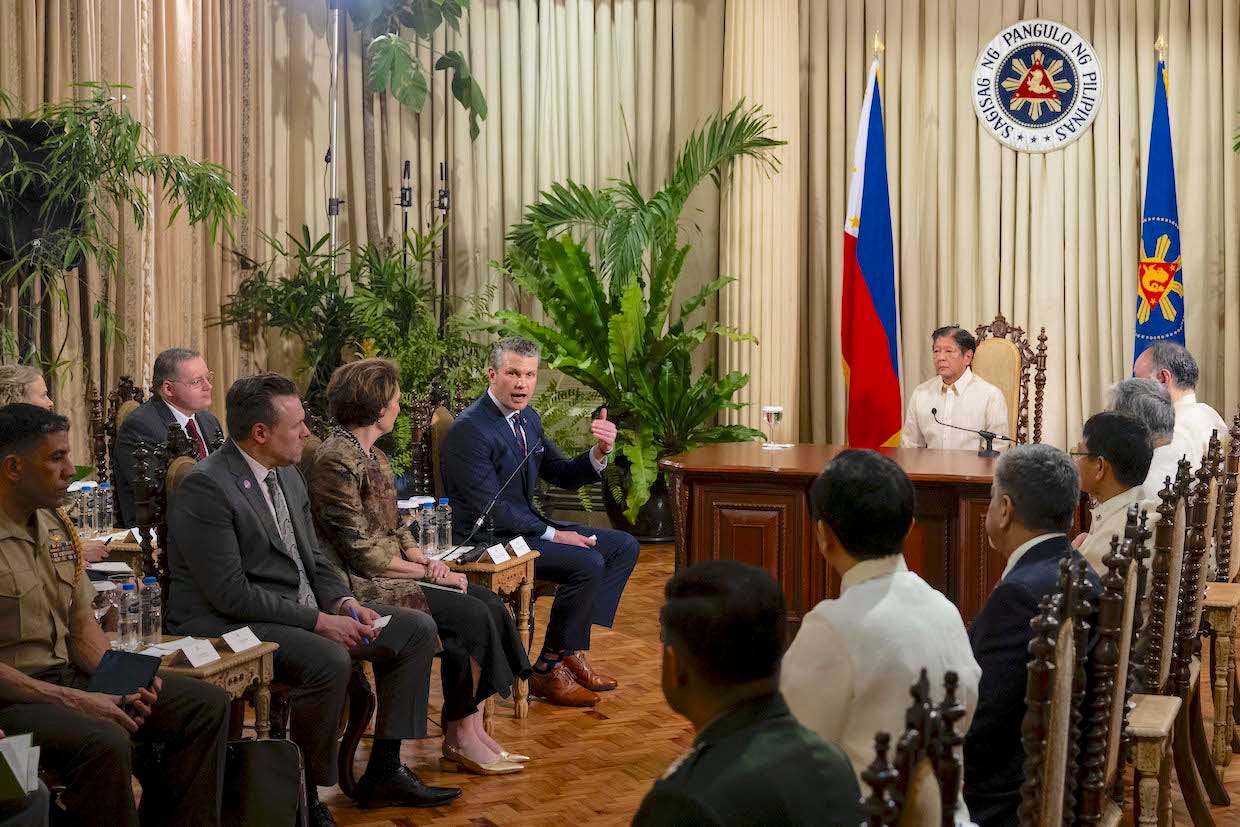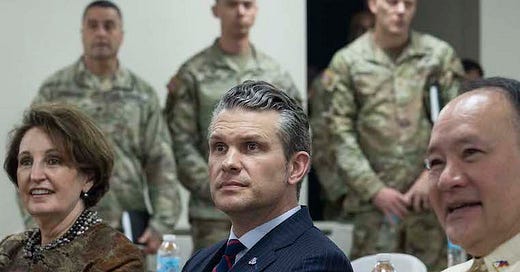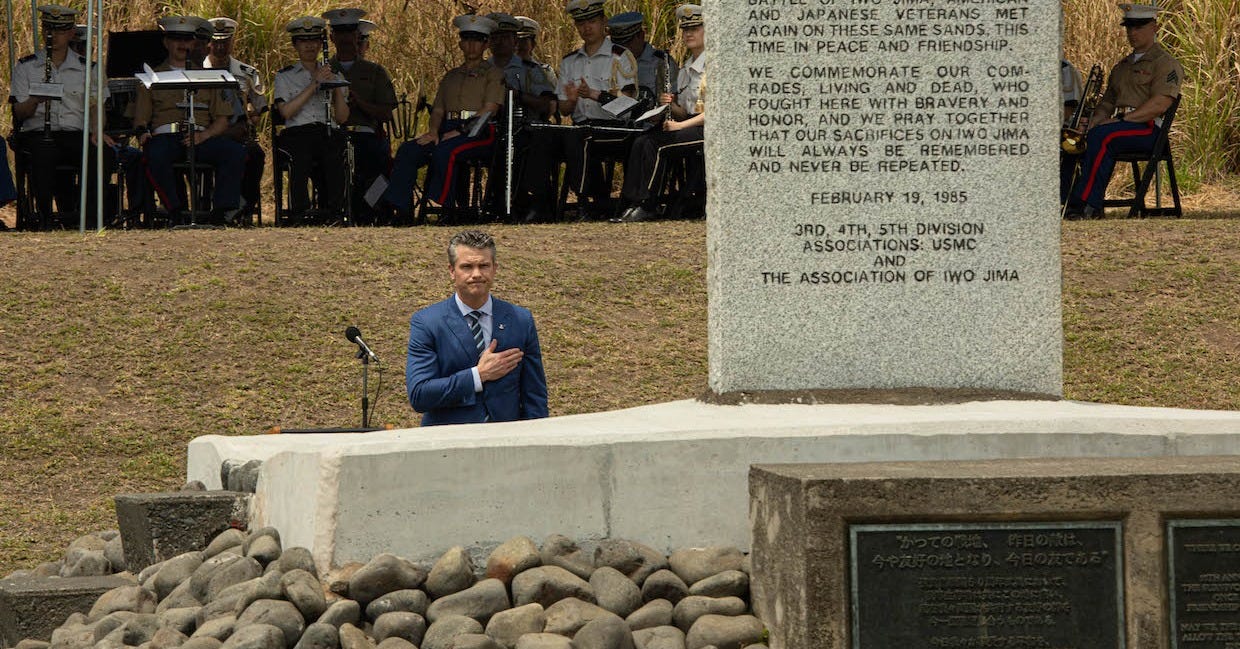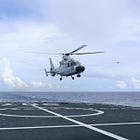Pete and greet
Pete Hegseth is touting the strength of US alliances during his first trip to Asia, but Trump's moves have some allies questioning what's in store for them.
When US Defense Secretary Pete Hegseth meets with Japanese Defense Minister Gen Nakatani on Sunday, he will arrive facing scrutiny over his handling of sensitive military plans, questions about his family members’ roles in the Defense Department, and doubts about the Trump administration’s commitment to allies in the region.
The latter issue is of acute interest for Tokyo. As I wrote for Breaking Defense this week, Japan is heavily invested in its military ties with the US, but officials there have been alarmed by the Trump administration’s early foreign-policy moves. They will likely want to know more about the administration’s plans for the alliance and how it envisions the US’s role in Asia going forward.
Tokyo’s concerns are driven largely by comments from Trump’s nominees for top jobs.
Elbridge Colby, picked to be undersecretary of defense for policy, said at his confirmation hearing that he thought Japan should go “a lot farther” than its recent commitment to raise total defense spending to 2% of GDP. Amb. George Glass, nominee for ambassador to Japan, echoed Colby and said plans to upgrade the alliance meant the US would likely seek more Japanese support for its forces there.
“Whether we have weapon systems that we need to upgrade, command-and-control that we're going to be upgrading along with the Japanese — these are very expensive ventures, and so undoubtedly I do believe we're going to go to the Japanese and talk about an increase in that support,” Glass said at his confirmation hearing.
Perhaps most concerning were comments from Trump himself. In early March, he complained about what he believed to be a lopsided alliance, calling it an “interesting deal” in which “we have to protect them but they don’t have to protect us.”

During Hegseth’s trip this week, his first to Asia as defense secretary, he has offered assurances but also sketched out the Trump administration’s expectations.
In a speech in Hawaii on Tuesday, Hegseth said an “America First” foreign policy wouldn’t mean “ignoring allies and partners” but would mean “our military-to-military relationships must make sense for the United States and for our friends.”
“Where there are imbalances, we will fix them,” Hegseth said. “We will right-size the obligations and responsibilities needed for modern deterrence and defense.”
There were “many opportunities” for defense-industrial collaboration and arms sales are “a priority” for the administration, Hegseth added, but allies and partners need “to be force multipliers” for the US and those relationships have to be “a two-way street.”
Hegseth then traveled to Guam, where he said that island and the Commonwealth of the Northern Mariana Islands “are vital parts of America” and that "any attack” on them “is an attack against the US.” (Guam and the CNMI are US territories, meaning they are part of the US but lack the same status as US states.)
In the Philippines a day later, he said Washington was “doubling down” on “our ironclad alliance” and would send new military capabilities to exercises there. The two sides also identified “priority areas” for defense-industrial cooperation.
Hegseth visited the Japanese island of Ioto, also known as Iwo Jima, on Saturday for a ceremony to mark the end of the World War II battle there 80 years ago. In a speech, he touted the strength of the ties that emerged from that war: “Our alliance has been and remains the cornerstone of freedom, prosperity, security, and peace in the Indo-Pacific, and it will continue.”
Japanese officials will still likely be looking for assurances on Sunday. Media reports indicate that the Pentagon is reconsidering plans for a major upgrade to its Japan-based command, US Forces Japan, as part of budget cuts. Japan’s Sankei Shimbun, citing US and Japanese officials, said the upgrade will go ahead but major components of the US’s Japan-based forces, such as the Navy’s 7th Fleet, will remain outside of US Force Japan’s control.
At the meeting on Sunday, officials “will confirm the start of the reorganization process into a joint military command,” Sankei Shimbun said. “However, the specific start date is still fluid.”
Tokyo was been bracing for requests like those described by Colby and Glass (Colby has said similar things in the past, as has Trump) but those comments and the administration’s moves to upend other relationships — most notably its dramatic shift on support for Ukraine against Russia — have left Japanese officials “increasingly alarmed” about the range of actions Trump could take on matters affecting the alliance with Japan, Ken Jimbo, a professor at Japan’s Keio University, told me in Bangkok on March 13.
Some of them, Jimbo said, are reassessing then-Prime Minister Fumio Kishida’s statement in 2022 that “Ukraine today may be East Asia tomorrow” and weighing now “the notion that the transactional politics could also happen vis à vis China.”






